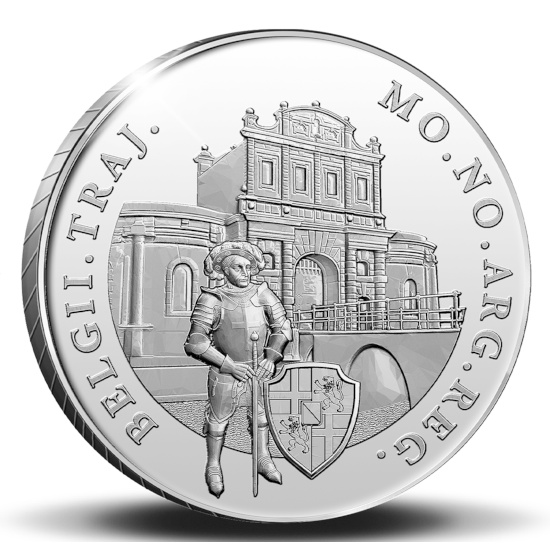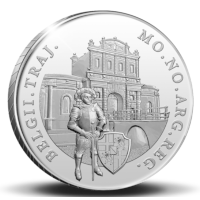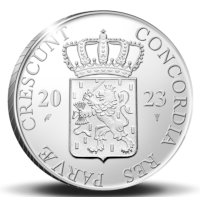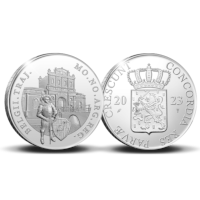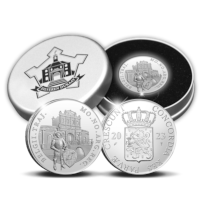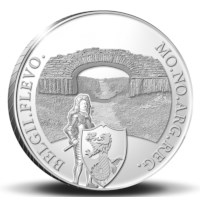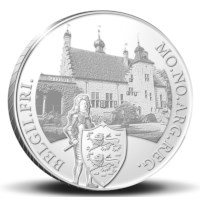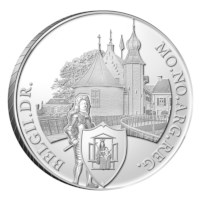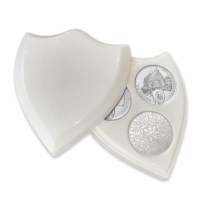Silver Ducat ‘Catharijnepoort Utrecht’ 2023
- Discover the new series ‘Dutch city gates and access roads’
- First issue: Catharijnepoort Utrecht
- Discover the history of Utrecht’s most important and best defendable city gate
- With new historic figure on the coin: Karel van Egmond
- Certificate of Authenticity
Silver Ducats are commissioned by the Dutch Ministry of Finance and are collector coins. The issue depicting Catharijnepoort Utrecht is part and also the first issue of the brand-new series “Dutch city gates and access roads”. Are you also collecting these silver coins?
Part 1: Catharijnepoort Utrecht: most important gateway to the city
In the Middle Ages, Utrecht slowly started to grow into a large city. And in order to easily reach the city, four main entrances to the city were built. One of these entrances was the Catharijnepoort. This gate stood on the west side of the city, near the current Vredenburg. It was named after the adjacent monastery, which was dedicated to Saint Catherine.
Although there is no image of the medieval gate, several sources say it was large and robust: the Catharijnepoort grew into the largest and best defensible gate in Utrecht. We also know that this gate was the oldest known storage place of the Utrecht city rights. In 1528, Charles V came to power: he has a large castle, named Vredenburg, built within the walls of the city. The Catharijnepoort was located outside the castle, directly in the shooting range of the city canons. Therefore, the gate is almost completely demolished, even though plans to rebuild it elsewhere are made. These plans are put into action in 1625: a new Catharijnepoort is being built. However, this is eventually also demolished in 1830, together with the rest of the Utrecht city defense.
On the Zilveren Dukaat "Catharijnepoort Utrecht" the new gate is shown, as it was designed by Paulus Moreelse in 1625. Original drawings of this gate can be admired in the archives of Utrecht.
Duke Karel van Egmond
In the previous series (Dutch Castles), knight Godard de Ginkell was on the coin. According to the Dutch Mint Act, a knight in armour should be on the coin. This time, Karel van Egmond (1467 – 1538) is taking over this honor. This armored man on the obverse of the coin was an important duke of several areas in the Netherlands. During his reign, he had to deal with threats from emperor Charles V. He also was the last independent feudal ruler of the Netherlands. For this new series, Karel van Egmond will be on the Silver Ducat.
Design
The obverse of the Silver Ducat “Catharijnepoort Utrecht” depicts Duke Karel van Egmond in front of the famous building. The province weapon of Utrecht can be found on his shield. The inscription on this issue reads: “MO.NO.ARG.REG.BELGII. TRAJ”. “MO.NO.ARG.REG.BELGII.” is the Latin abbreviation for “Moneta Nova Argenta Regni Belgii”: New Silver coin of the Kingdom of the Netherlands. TRAJ is short for Trajectum, which is the Latin word for Utrecht.
On the reverse of the Silver Ducat, the national coat of arms of the Netherlands with the Royal Crown between the numbers of the year can be found. The inscription reads: “CONCORDIA RES PARVAE CRESCUNT”, Unity makes Strength. Here you can also find the mint mark and the privy mark. As requested by many, the packaging for the new series is adjusted. The Silver Ducat is in a smaller packaging that not only takes up less space, but also fits in the mailbox.
| Article number | 0118086 |
|---|---|
| Metal | Silver |
| Content | 873/1000 |
| Weight | 28.25 g |
| Diameter | 40 mm |
| Edge | Cable |
| Quality | Proof |
| Mintage | 1,750 |

